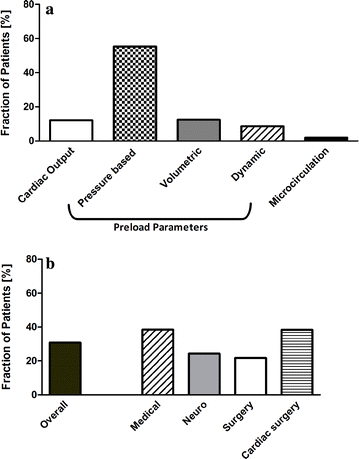Practice of hemodynamic monitoring and management in German, Austrian, and Swiss intensive care units: the multicenter cross-sectional ICU-CardioMan Study
- PMID: 27246463
- PMCID: PMC4887453
- DOI: 10.1186/s13613-016-0148-2
Practice of hemodynamic monitoring and management in German, Austrian, and Swiss intensive care units: the multicenter cross-sectional ICU-CardioMan Study
Erratum in
-
Erratum to: Practice of hemodynamic monitoring and management in German, Austrian, and Swiss intensive care units: the multicenter cross-sectional ICU-CardioMan Study.Ann Intensive Care. 2017 Dec;7(1):75. doi: 10.1186/s13613-017-0297-y. Epub 2017 Jul 17. Ann Intensive Care. 2017. PMID: 28718083 Free PMC article. No abstract available.
Abstract
Background: Hemodynamic instability is frequent and outcome-relevant in critical illness. The understanding of complex hemodynamic disturbances and their monitoring and management plays an important role in treatment of intensive care patients. An increasing number of treatment recommendations and guidelines in intensive care medicine emphasize hemodynamic goals, which go beyond the measurement of blood pressures. Yet, it is not known to which extent the infrastructural prerequisites for extended hemodynamic monitoring are given in intensive care units (ICUs) and how hemodynamic management is performed in clinical practice. Further, it is still unclear which factors trigger the use of extended hemodynamic monitoring.
Methods: In this multicenter, 1-day (November 7, 2013, and the preceding 24 h) cross-sectional study, we retrieved data on patient monitoring from ICUs in Germany, Austria, and Switzerland by means of a web-based case report form. One hundred and sixty-one intensive care units contributed detailed information on availability of hemodynamic monitoring. In addition, detailed information on hemodynamic monitoring of 1789 patients that were treated on due date was collected, and independent factors triggering the use of extended hemodynamic monitoring were identified by multivariate analysis.
Results: Besides basic monitoring with electrocardiography (ECG), pulse oximetry, and blood pressure monitoring, the majority of patients received invasive arterial (77.9 %) and central venous catheterization (55.2 %). All over, additional extended hemodynamic monitoring for assessment of cardiac output was only performed in 12.3 % of patients, while echocardiographic examination was used in only 1.9 %. The strongest independent predictors for the use of extended hemodynamic monitoring of any kind were mechanical ventilation, the need for catecholamine therapy, and treatment backed by protocols. In 71.6 % of patients in whom extended hemodynamic monitoring was added during the study period, this extension led to changes in treatment.
Conclusions: Extended hemodynamic monitoring, which goes beyond the measurement of blood pressures, to date plays a minor role in the surveillance of critically ill patients in German, Austrian, and Swiss ICUs. This includes also consensus-based recommended diagnostic and monitoring applications, such as echocardiography and cardiac output monitoring. Mechanical ventilation, the use of catecholamines, and treatment backed by protocol could be identified as factors independently associated with higher use of extended hemodynamic monitoring.
Keywords: Cardiac output; Echocardiography; Guidelines; Hemodynamic management; Pulse contour analysis; Pulse pressure variation; Stroke volume variation; Thermodilution; Treatment protocol.
Figures



References
-
- Le Roux P, Menon DK, Citerio G, Vespa P, Bader MK, Brophy GM, et al. Consensus summary statement of the international multidisciplinary consensus conference on multimodality monitoring in neurocritical care: a statement for healthcare professionals from the neurocritical care society and the European Society of Intensive Care Medicine. Intensive Care Med. 2014;40:1189–1209. doi: 10.1007/s00134-014-3369-6. - DOI - PubMed
LinkOut - more resources
Full Text Sources
Other Literature Sources

